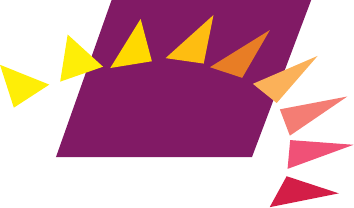
16 JANUARY/FEBRUARY 2018
QUIZ ANSWERS PAGE 22
FEATURE
STORY
quiz: test your
knowledge oF
unconscious bias
BY SURI SURINDER, WITH CHERYL MEYER
REPRINTED WITH PERMISSION FROM AMERICAN INSTITUTE OF CPAS
THE QUIZ ORIGINALLY APPEARED IN THE JOurnAl OF ACCOunTAnCy
Many professionals, without realizing it, make “unconscious” choices regarding those who are different
in terms of race, gender, geographic origin, college education, and other factors. This “unconscious bias”
impacts both personal and business decisions. How much do you know about unconscious bias? This quiz
tests your knowledge on the subject.
7. Choose the best order for the words in the blanks.
If we can be more _________ about some things that
we are normally _______ about, we can mitigate
unconscious bias.
m reflexive/reflective m reflective/reflexive
8. Choose the best order for the words in the blanks.
Labeling a reaction or a thought as unconscious bias
ascribes neither favorable nor unfavorable________,
even though it may have unfavorable________.
m intent/impact m impact/intent
9. Choose the best order for the words in the blanks.
One of the most commonly experienced unconscious
biases that could result in nondiverse environments and
noninclusive behaviors is __________ bias, which causes
__________ with people similar to us.
m affiliation/affinity m affinity/affiliation
10. Choose the best order for the words in the blanks.
A good way to get people to realize their unconscious
biases is by approaching them in a spirit of __________
rather than __________.
m inquiry/advocacy m advocacy/inquiry
1. True or false: Unconscious bias is a hidden preference
or predisposition for or against something.
m True m False
2. True or false: Unconscious biases exist in all of us, and
are necessary to keep us safe.
m True m False
3. True or false: Unconscious bias almost never results in
suboptimal outcomes.
m True m False
4. What causes unconscious bias?
m Discrimination and prejudice m Absence of training
m Bad influences m Autopilot processing
m Absence of experience
5. The percentage of information processed unconsciously
by the human brain through experienced-based rules is:
m Less than 10% m Less than 50%
m More than 75% m More than 90%
m More than 99%
6. Recent research indicates that the most fundamental
need that human beings have is:
m Food, clothing, shelter m Belonging
m Safety m Esteem
m Maximizing one’s potential

1. Unconscious bias is a hidden preference or
predisposition for or against something.
True - That statement is the definition of bias,
though in common usage bias has a negative
connotation because of its association with terms
like “prejudice” and “discrimination.”
2. Unconscious biases exist in all of us, and are
necessary to keep us safe.
True - Unconscious biases are often automatic
responses designed to keep us safe from harm
when dealing with potentially dangerous situations.
3. Unconscious bias almost never results in
suboptimal outcomes.
False - Sometimes the unconscious preferences that
function in autopilot mode in our brains can lead us
to poor decisions in business
4. What causes unconscious bias?
Autopilot processing - Unconscious biases are the
result of programmed guidelines and rules that
the brain learns based on experience and uses
for decisions that may not need—or allow for—
deliberate consideration.
5. The percentage of information processed
unconsciously by the human brain through
experienced-based rules is:
More than 99% - The brain gets 11 million bits of
information every minute and can deal with 40. The
remaining 99.999996% of information is processed
unconsciously.
6. Recent research indicates that the most
fundamental need that human beings have is:
Belonging - Originally, the thinking was that food,
clothing, and shelter were the most fundamental
human needs. But recent research indicates that the
need to belong is programmed into us as infants
when we begin to realize our dependency on our
parents for our physiological needs.
7. If we can be more __________ about some
things that we are normally __________ about,
we can mitigate unconscious bias.
reflective/reflexive - Unconscious bias is about being
more aware and conscious of autopilot decisions that
our brains make.
8. Labeling a reaction or a thought as
unconscious bias ascribes neither favorable nor
unfavorable________, even though it may have
unfavorable________.
intent/impact - One of the unique aspects of
recognizing unconscious bias is that it assumes no
ill intent since the underlying hypothesis is that it is
the result of preferences that we do not know exist.
However, there could be a negative impact.
9. One of the most commonly experienced
unconscious biases that could result in nondiverse
environments and noninclusive behaviors is
__________ bias, which causes __________ with
people similar to us.
affinity/affiliation - Affinity bias is the instinctive
gravitational pull we feel toward people who are
similar to us, and to whom we feel an affiliation with
as well. This can result in a homogenous environment
composed only of our in-groups.
10. A good way to get people to realize their
unconscious biases is by approaching them in a
spirit of __________ rather than __________.
inquiry/advocacy - By being inquisitive and curious
about why people think a certain way instead of being
an advocate of a different way, one can help them
realize their own unconscious biases.
unconcsious bias quiz
answers & inFormation
Quiz Page 16
22 JANUARY/FEBRUARY 2018
